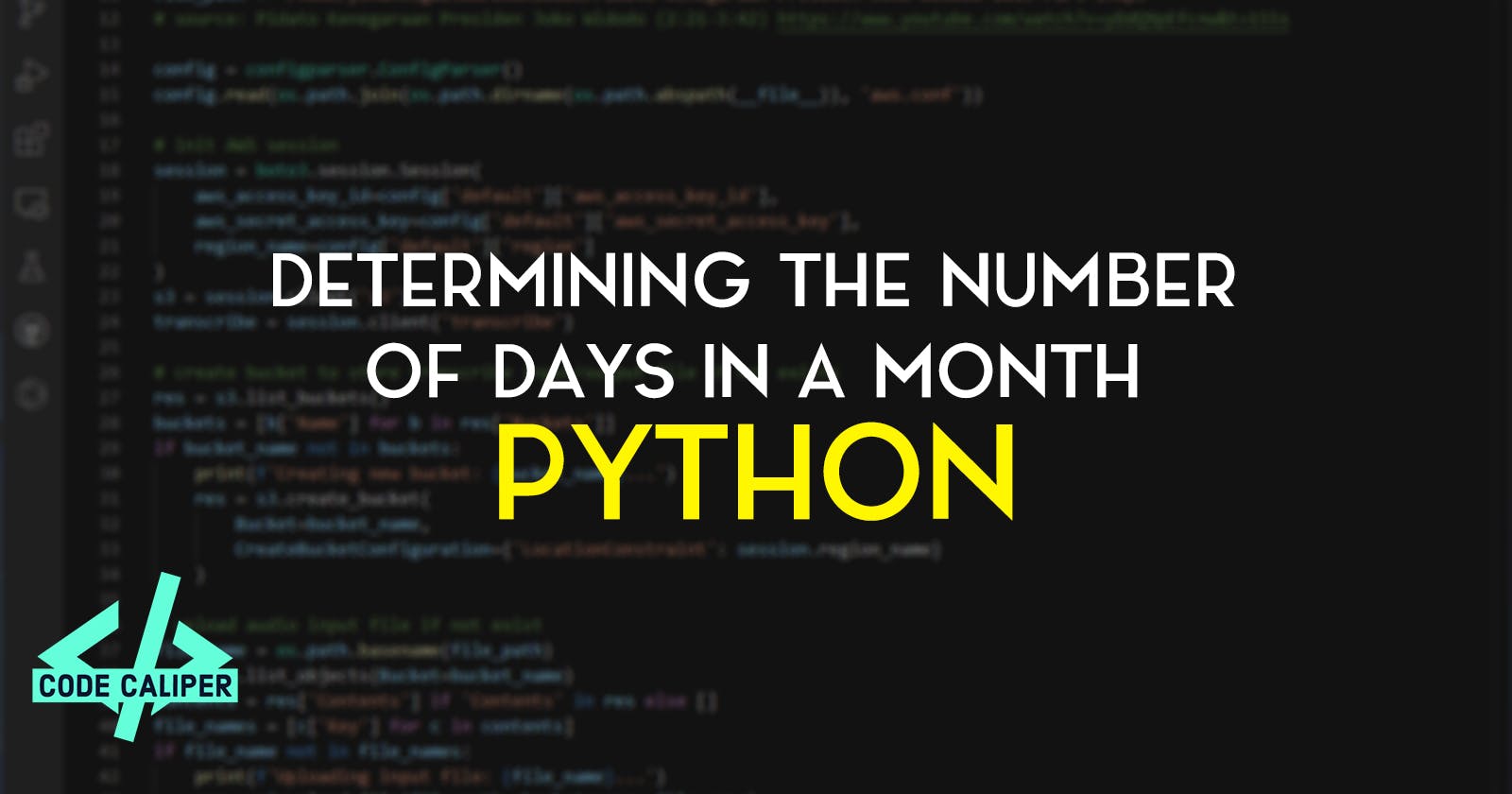Table of contents
No headings in the article.
Have you ever needed to know how many days are in a particular month? Python makes it easy to find out with just a few lines of code.
First, we start by asking the user to enter the name of the month they are interested in.
month = input("Enter Month")
Next, we use an if statement to check if the month the user entered is one of the months that has 31 days. We do this by creating a tuple of month names that have 31 days and using the in operator to check if the user's input is in that tuple. If it is, we print a message saying that the month has 31 days.
if month.lower() in ("january,march,may,july,august,october, december"):
print("It has 31 Days")
Then, we use an elif statement to check for the special case of February. February can have either 28 or 29 days, depending on whether it is a leap year or not. So, we print a message saying that February has either 28 or 29 days depending on the year.
elif month == "february":
print("It has 28 in a non Leap year and 29 Days in a Leap year")
Finally, we use an else statement to handle the remaining months, which are all the ones that have 30 days. We print a message saying that these months have 30 days.
else:
print("It has 30 Days")
And that's it! With just a few lines of code, we can easily determine how many days are in any given month. You could even take it a step further and ask the user for the current year, and use that information to determine the number of days in February for a leap year.
I hope this helps clarify the logic and flow of the code for finding the number of days in a month with Python.

